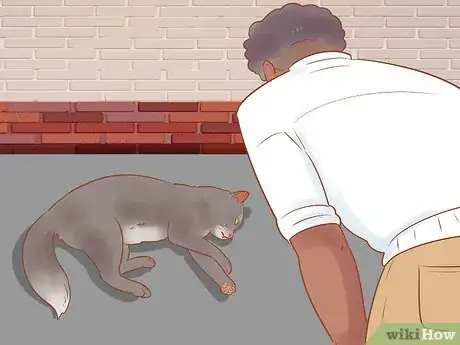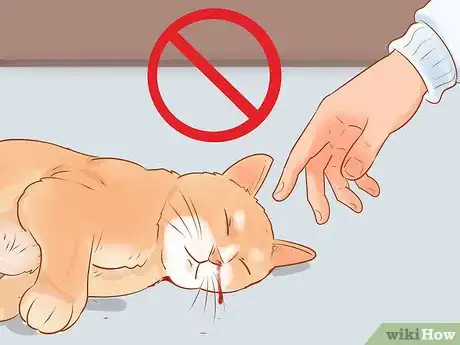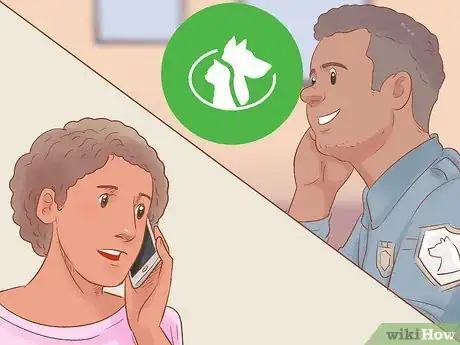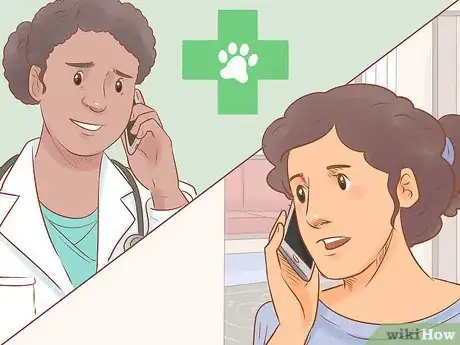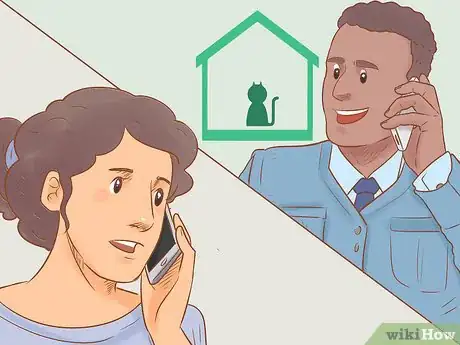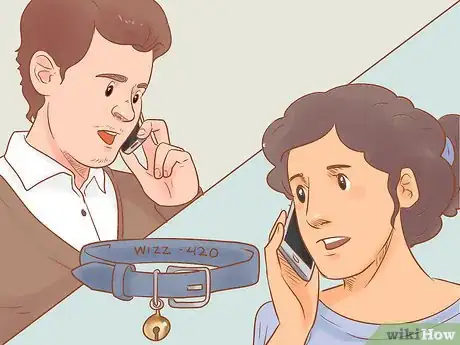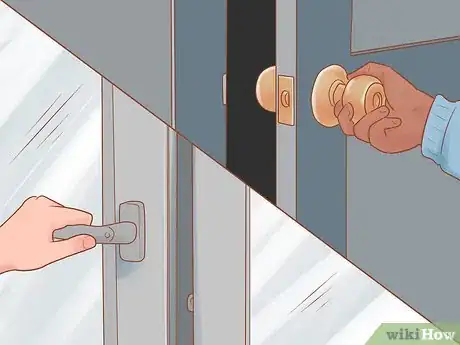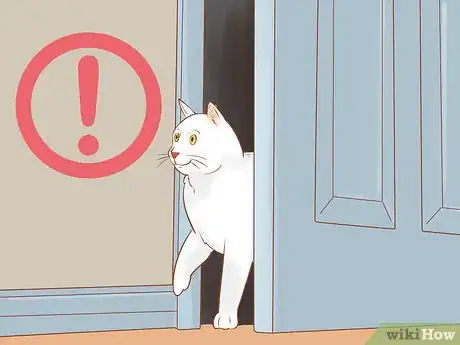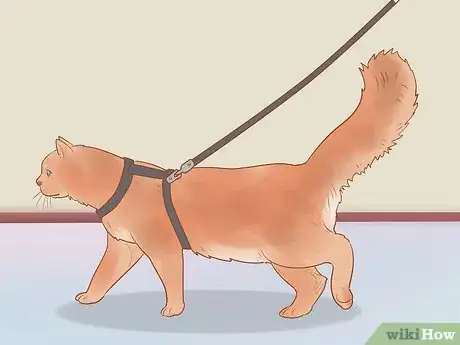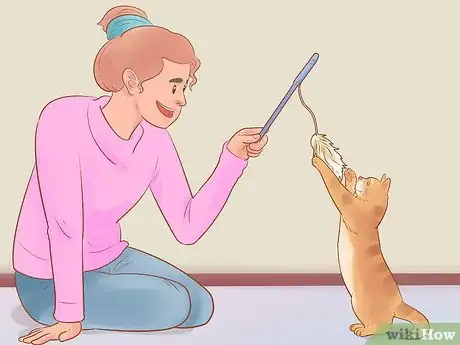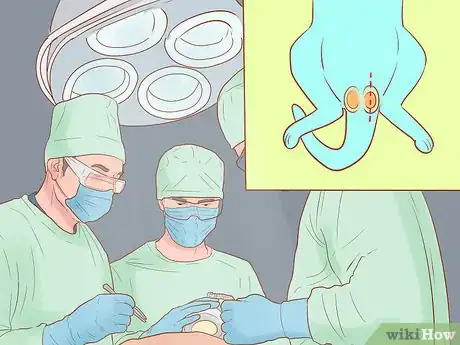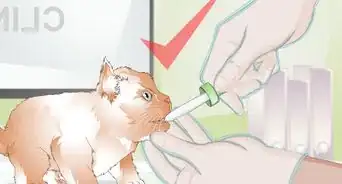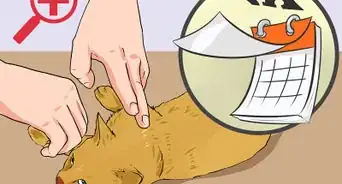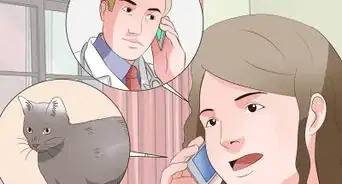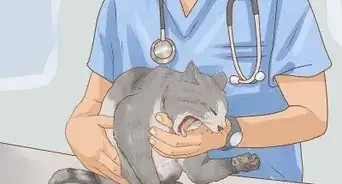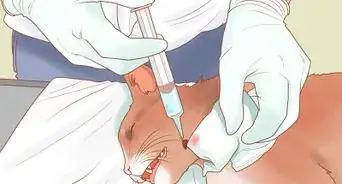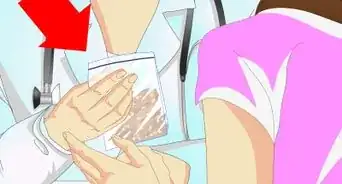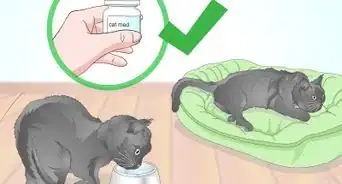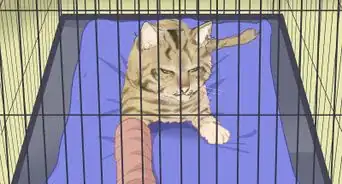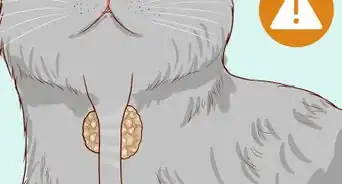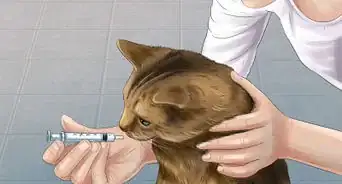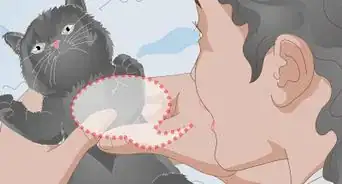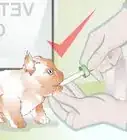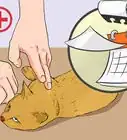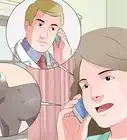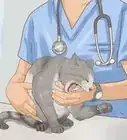This article was co-authored by Melissa Nelson, DVM, PhD. Dr. Nelson is a Veterinarian who specializes in Companion and Large Animal Medicine in Minnesota, where she has over 18 years of experience as a veterinarian in a rural clinic. She received her Doctor of Veterinary Medicine from the University of Minnesota in 1998.
There are 11 references cited in this article, which can be found at the bottom of the page.
This article has been viewed 33,327 times.
If a cat is hit by a car, get help immediately. You can contact your local animal control agency, veterinary clinic, or animal shelter for assistance. Whoever you get in contact with, provide them with all the information you have about the nature of the cat’s injuries, whether the cat is conscious, and most importantly, where you and the cat are located. Stay with the cat as long as necessary and follow the directions of the person you contact for help.
Steps
Taking Action
-
1Determine if the cat is dead. When a cat is hit by a car, it might be rendered unconscious and in need of medical attention. However, it might also be dead. To determine the status of the cat, look for signs that it is breathing.[1]
- For instance, you could monitor the cat’s flank. If the cat is lying on its side, its flank will slowly rise and fall as is breathes in and out.
- Alternately, place a tissue in front of the cat’s nose. If the tissue moves forward and away from the cat’s nose, the cat is breathing in and out.
- Finally, pinch 1 of the cat’s rear toes lightly. If the cat pulls away, it is alive.
- If the cat’s body is stiff when you touch it, it is dead.
-
2Do not attempt to move the cat unless directed by qualified personnel. The cat might harm you, especially in its injured and fearful state, so don’t move or pick up the cat. Instead, wait for qualified personnel to arrive.[2]
- If a vet asks you to bring the cat to them, splint or stabilize any visible injuries, if possible. Then, wrap the cat in a towel, making sure not to cover the cat’s mouth or nose or wrap the towel too tight. Put the cat in a carrier or open container to reduce the risk of additional injuries.[3]
Advertisement -
3Call your local animal control agency. The animal control agency can best determine how to help a cat hit by a car. If you can’t contact them (for instance, if you’ve encountered the injured cat outside of normal business hours), call the police. Explain the situation to the police calmly and clearly.[4]
- For instance, you might say, “Hello. I’ve found a cat that has been hit by a car at [your location]. The animal is still alive and needs help. Please send an animal control officer to this location. I will remain here until help arrives.”
-
4Contact your vet. If you can’t contact the animal control agency and the police will not help, contact your vet. Vets are specially trained to help cats that have been hit by cars or suffered similar traumatic injuries. Your vet will work hard to help your cat heal.[5]
- Even if you are not a pet owner yourself (and therefore do not have a vet of your own), you might still know of veterinary clinics in your vicinity. Take the cat that was hit by a car to the nearest such clinic.
-
5Report the cat’s injuries to an animal shelter. If you don’t know of any vets in your vicinity, or if the animal shelter or rescue organization is closer to the location of the injured cat than the vet, report the cat’s injuries to the animal shelter first. Animal shelters or cat rescue organizations have the staff and facilities necessary to help a cat hit by a car. They might direct you to take the cat to them, or contact the cat’s owner.[6]
-
6Contact the owner. When a cat is his by a car, its owner will want to know. You might be able to contact the cat’s owner by checking for a collar. Cat collars often have tags with information about the cat, including its name, the name of its owner, and the number and address where the owner can be reached. Use this information to get in touch with the owner.[7]
- Even if the cat does not have a collar and tags, it might still be possible to contact the owner if the cat has been microchipped. Take the cat to a rescue organization or animal shelter so they can use a device which will be able to detect a microchip in the cat if one has been implanted.
Preventing Your Cat From Being Hit By a Car
-
1Ensure your home is escape-proof. Cats are escape artists, and can easily slip through cracked windows or doors. Therefore, don’t leave windows and doors ajar and make sure all your windows have screens. When you enter the home, close the door quickly and tightly behind you.[8]
-
2Discourage darting. If your cat tends to dart toward the door when you leave, get a friend or family member to hold the cat before you exit. Alternately, squirt your cat with water just before leaving. You might also choose to provide your cat with a puzzle feeder just before making an exit to keep it occupied while you leave.[9]
-
3Use a leash when taking your cat out. Cats are fast and can easily end up far away when chasing other creatures they encounter outside. To prevent your cat from racing off, only take it out with a leash and harness.[10]
-
4Make indoor life enjoyable. If your cat is comfortable indoors, it will have little motivation to go outside. Provide plenty of toys for your cat, and play with it regularly. Provide a cat house or perch for your cat to lounge in. Keep the litter boxes clean. With a healthy, happy cat, you’ll discourage escape behavior.[11]
-
5Neuter or spay your cat. If your cat is neutered or spayed, it will have much lower urge to roam and find a mate. Plus, neutering and spaying makes cats less quarrelsome and can reduce their likelihood for certain diseases.[12]
- Cats can be safely neutered or spayed at about six month of age.
References
- ↑ http://www.pets.ca/cats/tips/cats-and-car-accidents-pet-tip-169/
- ↑ https://www.peta2.com/news/help-animals-in-road/
- ↑ https://www.avma.org/public/EmergencyCare/Pages/Handling-an-Injured-Pet.aspx
- ↑ https://www.peta2.com/news/help-animals-in-road/
- ↑ http://www.pets.ca/cats/tips/cats-and-car-accidents-pet-tip-169/
- ↑ https://www.rspca.org.uk/adviceandwelfare/pets/cats/straycats
- ↑ http://www.catcaresociety.org/resources/what-to-do-when-you-find-a-cat
- ↑ http://www.humanesociety.org/animals/cats/tips/cat_happy_indoors.html
- ↑ http://www.catbehaviorassociates.com/door-darting/
About This Article
To get help for a cat hit by a car, start by checking if it’s breathing by holding a tissue in front of its nose. If the tissue moves, that means the cat is breathing, at which point you should call your local Animal Control Agency for advice. If you're directed by animal control to bring the cat to a vet, splint any visible injuries and wrap the cat in a towel, taking care not to cover its mouth. Otherwise, leave the cat where it is until the professionals arrive to avoid causing further injury. You should also check the cat’s collar to get the owner’s information so you can let them know what has happened. For tips from our Veterinary co-author, including how to prevent your cat from getting hit by a car, keep reading!
